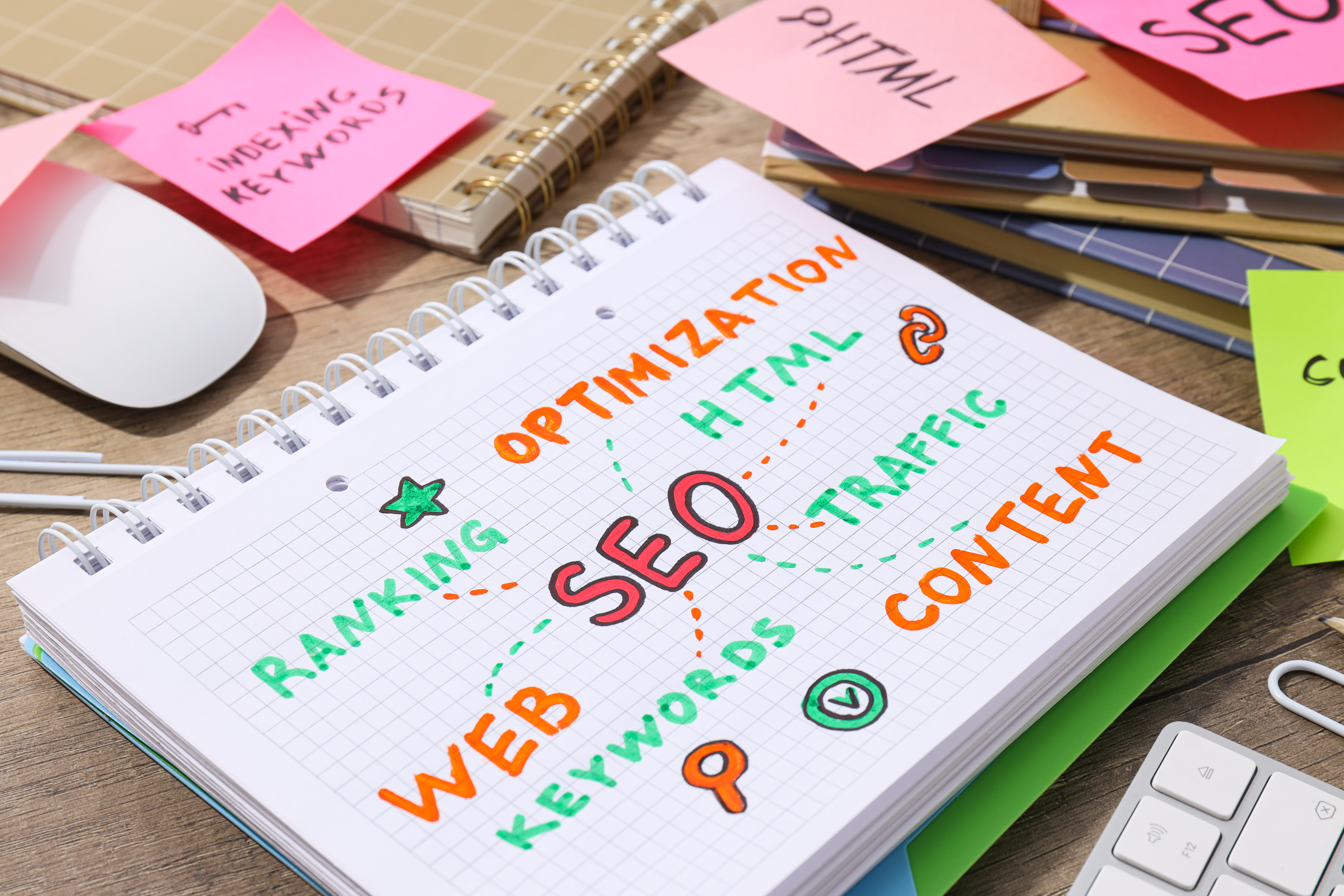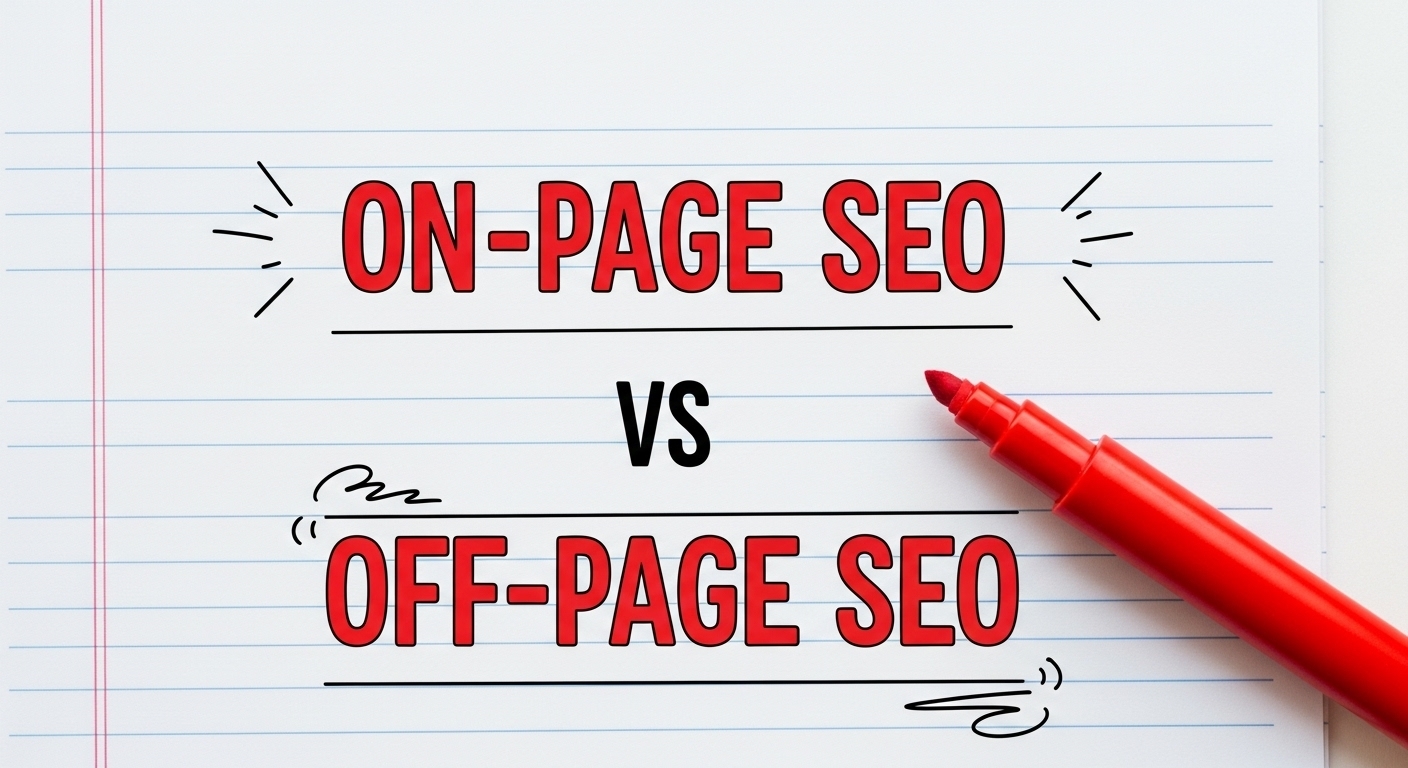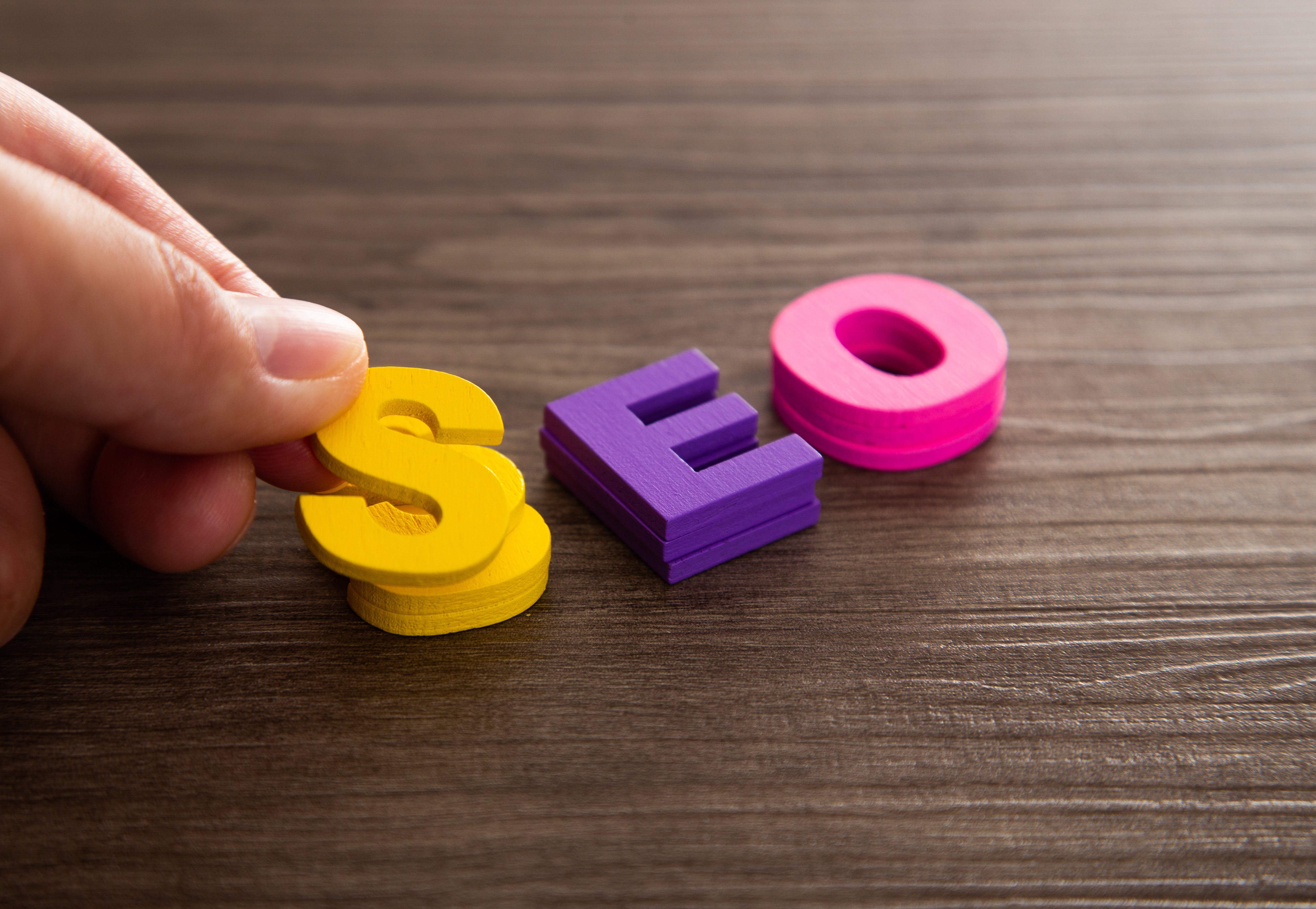13 min read
What Is On-Page SEO? Complete Strategies for Success
Jeremy Wayne Howell
:
Jul 3, 2025 5:57:44 AM

Key Highlights
-
Master the fundamentals of on-page SEO to elevate search engine rankings and enhance your website’s visibility.
-
Understand how meta descriptions, title tags, and header tags influence search engine results and improve keyword rankings.
-
Learn strategic keyword research and placement techniques to optimize page content for relevant keywords.
-
Explore user experience-driven practices, such as mobile-friendliness, internal linking, and multimedia optimization, to keep visitors engaged.
-
Uncover the significance of schema markup and URL structure in boosting site performance and rich snippets on search engines.
Overview
On-page SEO, also known as on-site SEO, is an essential component of search engine optimization. It revolves around optimizing various elements of your webpage, including visible content and behind-the-scenes HTML elements, to increase your website’s chances of ranking highly on search engine results.
By enhancing page content, title tags, meta descriptions, and internal links, on-page SEO works to align your website with user search intent. In this blog, we uncover everything you need to implement a successful strategy for better organic traffic and search results.
Understanding On-Page SEO
On-page SEO focuses on optimizing web pages internally to meet the expectations of search engines and users alike. This strategy involves working on elements like content, keywords, and technical structures that can set your site apart from competitors.
An effective on-page SEO strategy ensures that individual web pages communicate their purpose to search engines, enabling higher visibility. By using proven techniques like quality content creation, relevant keyword placement, and structured headers, you position your site for ranking success.
Definition and Key Concepts
On-page SEO refers to optimizing elements within individual pages to make them compatible with search engine algorithms. This includes factors such as meta descriptions, title tags, header tags, and internal links, all of which contribute to enhanced site visibility.
Focusing on content quality is pivotal. Engaging and relevant content tailored to user search intent ensures that users find solutions to their queries, which improves page rankings. Furthermore, the structure and readability of page content play a key role in user experience and search engine rankings.
Each element of on-page SEO, like keywords and multimedia optimization, acts as a ranking factor. These components provide search engines with valuable insight into your web page’s topic and relevance, boosting your ability to secure top positions in search results. Understanding these core concepts sets the stage for implementing effective techniques.
How On-Page SEO Differs from Off-Page and Technical SEO
On-page SEO is performed directly within your website, focusing on content optimization, internal links, and ensuring that your pages align with user search intent. In contrast, off-page SEO involves activities outside of your site, such as backlinks and link building to improve domain authority.
Technical SEO revolves around enhancing your website’s technical infrastructure, such as site speed, mobile responsiveness, and the site structure, to facilitate easier crawling by search engine crawlers. While technical SEO supports the foundation of a website, on-page optimization fine-tunes individual pages to improve organic rankings.
Unlike off-page SEO, where control lies outside your domain, on-page strategies allow you to directly refine and adapt site elements. Together, these aspects form a holistic SEO approach, but mastering on-page practices offers the clearest path to immediate improvements in rankings.
Why On-Page SEO Matters for US Businesses

For US businesses, prioritizing on-page SEO is vital to staying competitive in digital spaces. Search engines assess keywords, meta elements, and user experience signals to determine page relevance, all of which directly impact visibility and ranking.
Strategically optimizing on-page elements helps businesses attract organic traffic and align with the expectations of their target audience. By understanding search engine rankings dynamics and integrating comprehensive on-page practices, US businesses can pave the way for higher search results visibility and better engagement opportunities.
Impact on Search Engine Rankings
Optimized on-page SEO elements significantly influence search engine rankings. Proper integration of keywords into title tags, header tags, and meta descriptions helps your content align with user search intent. This alignment boosts keyword rankings and organic traffic.
Search engines analyze structured page elements like internal links and multimedia, identifying high-value pages to display prominently in search engine results. Ensuring that ranking factors, such as mobile compatibility and site speed, are integrated improves your chances of climbing the rankings ladder.
Consider factors such as external links to authoritative sources and schema markup. These additions provide extra context, helping search engines interpret the relevance of your content. Active tweaking of these elements, following SEO practices, ensures sustained improvement in both short-term rankings and long-term traffic flow.
Enhancing User Experience and Engagement
On-page SEO also strives to enhance user experience—a critical factor in engagement and page success. Optimizing multimedia elements, such as video and image files, ensures pages cater to your audience's expectations effectively.
Best practices include formatting content into digestible headers and subheaders, linking important pages internally, and offering consistent anchor text. A user-friendly site structure keeps audiences on your website for longer, signaling high engagement to search engines.
By featuring content that anticipates user needs and search intent, pages become more accessible and valuable to visitors. These factors, coupled with a responsive design for mobile devices, influence search engine rankings and build trust within your audience. Elevated engagement sets the stage for higher visibility online while meeting the expectations of search engine algorithms.
Essential Elements of On-Page SEO
On-page SEO includes several foundational components like title tags, meta descriptions, and header tags that boost page visibility. By carefully structuring these components, you enable greater discoverability and improve search rankings.
Incorporating relevant keywords naturally into these elements is paramount to aligning with search intent. Together, these practices work to create an engaging, accessible, and structured user experience, ensuring pages remain competitive in search engine rankings. Let’s dive into effective strategies for optimizing title tags and meta descriptions.
Title Tags Optimization
Title tags are HTML elements that define a webpage’s title and play a fundamental role in its SEO performance. They appear in search engine results, browser tabs, and shared posts on social media, influencing click-through rates.
An optimized title tag should feature your primary keyword naturally while remaining under 60 characters. Spamming or duplicating page titles may lead to penalties, reducing your likelihood of ranking highly in search results.
Analyzing competitors’ title strategies on the SERP helps refine your approach and differentiate your page content. Well-optimized meta titles signal relevancy to search engine crawlers in a concise manner, boosting search visibility without limiting content clarity.
Crafting Effective Meta Descriptions
Meta descriptions summarize page content and influence whether users click on your link in search engine results. While they don't directly impact rankings, they are integral to fostering engagement and attracting organic traffic.
Limiting meta descriptions to 120 characters ensures easy readability across devices and maintains clarity. Incorporating keywords enhances alignment with user search intent, especially as search engines often bold these terms in the SERP snippet.
Active voice and concise copy remain best practices for encouraging clicks. Use calls-to-action, such as "Find more info here" or "Sign up today," to boost click-through rates. Prioritize unique, informative descriptions to reinforce positive user expectations and draw in targeted audiences.
Structured Heading Tags (H1, H2, H3, etc.)
Utilizing structured heading tags, such as H1, H2, and H3, is essential for optimal search engine optimization. These tags not only help organize content but also enhance user experience by providing a clear hierarchy and structure to web pages. Search engines use header tags to decipher the importance of various sections, impacting search rankings.
A well-crafted H1 tag should include the target keyword, while subsequent tags like H2 and H3 should detail supporting information. This approach streamlines navigation for both users and search engine crawlers, ultimately contributing to improved organic traffic and visibility in search results.
Keyword Research and Placement
Effective keyword research and placement are essential components of a solid SEO strategy. Understanding search intent allows for the identification of relevant keywords that resonate with your audience. Prioritizing long-tail keywords can enhance organic traffic by targeting niche queries.
Once identified, strategic keyword placement within title tags, meta descriptions, and header tags will optimize search engine rankings. It's critical to maintain natural keyword density to avoid the pitfalls of keyword stuffing, ensuring a seamless user experience while still adhering to search engine guidelines. Engaging content that answers user needs consistently ranks higher in search results.
Identifying Relevant Keywords for Your Audience
Understanding the needs and preferences of your audience is crucial for effective keyword research. Start by analyzing common queries and interests that relate to your niche, utilizing tools such as Google Trends and keyword planners to uncover relevant keywords.
By tapping into synonyms and related keywords, you can expand your keyword pool and refine your SEO strategy, ensuring it resonates with your target demographic.
Furthermore, engaging with social media platforms and forums can unveil valuable insights on user intent, guiding you to identify content gaps and optimize your web pages for higher visibility in search engine results.
Strategic Keyword Placement in Content
Effective integration of targeted keywords within your content is crucial for maximizing visibility in search results. Placing keywords strategically in areas such as title tags, headers, and throughout the body not only enhances relevance for search engine crawlers but also aids in satisfying user intent.
Utilizing natural language and maintaining a comfortable keyword density ensures that your writing remains engaging while still addressing SEO best practices.
Additionally, incorporating related keywords can further enhance contextual understanding, helping search engines categorize your content accurately, which ultimately leads to improved search engine rankings and organic traffic.
Avoiding Keyword Stuffing
Ensuring a natural flow in your content while maintaining optimal keyword density is crucial for effective SEO. Overusing keywords, known as keyword stuffing, can lead to penalties from search engines and a negative user experience. Instead, focus on integrating relevant keywords seamlessly within your text, ensuring that more attention is paid to clarity and readability.
Utilizing synonyms and related keywords improves your chances of capturing search intent without compromising quality. Incorporating varied language and maintaining a conversational tone will foster better engagement with your audience and enhance your organic traffic potential.
Creating Valuable, Unique Content
.jpg?width=7360&height=4912&name=photography-ideas-creative-occupation-design-studi-2025-02-10-00-14-02-utc%20(1).jpg)
Crafting valuable, unique content is fundamental to any successful SEO strategy. Quality content that aligns with user intent attracts organic traffic, enhancing both engagement and search engine rankings. Incorporating original visuals and optimizing image file sizes further improves user experience.
Regularly updating content ensures relevance and positions your site favorably among search engine crawlers. Additionally, offering important information in a clear structure, including rich snippets and meta descriptions, enhances discoverability. Engaging content not only builds trust but also encourages social media sharing, amplifying your online presence and authority.
Satisfying User Intent
Understanding user intent plays a pivotal role in on-page SEO strategies, as it drives the creation of relevant content that genuinely resonates with your audience. By aligning webpage content with search intent, the likelihood of appearing in search engine results significantly increases, thus enhancing organic traffic.
Crafting quality content that satisfies user queries not only improves user experience but also supports higher keyword rankings. Utilizing tools for keyword research helps identify related keywords and search intent, ensuring that the content fulfills users' needs and expectations on search engines.
Incorporating Original Images and Visuals
Visual elements play a crucial role in enhancing user experience and engagement on web pages. Incorporating original images not only makes content more appealing but also boosts SEO performance by improving image optimization. Unique visuals can reduce bounce rates and keep visitors on your page, thereby signaling to search engines that the content is valuable.
Furthermore, utilizing relevant alt text for images ensures that search engines understand their context, which can improve search engine rankings. Always aim for high-quality image files that respect optimal file sizes for faster load times, creating a seamless experience for mobile users.
Maintaining Freshness and Relevance
Up-to-date content is essential for enhancing user experience and improving SEO rankings. Regularly refreshing existing webpages with new information allows search engines to recognize them as valuable resources, increasing the chances of ranking higher in search results. Furthermore, addressing trending topics and user queries keeps your target audience engaged, catering to their search intent.
Incorporating relevant keywords naturally within updated content ensures alignment with current interests and improves organic traffic. Remember, maintaining freshness not only boosts credibility but also strengthens your overall SEO strategy. A well-structured plan for content updates can significantly enhance your site’s performance.
Optimizing Internal and External Links
Creating a robust linking strategy is essential for enhancing both user experience and search engine optimization. Internal linking not only guides visitors through your content but also distributes page authority across your site. Utilizing relevant anchor text improves keyword relevance within articles, supporting your SEO strategy.
On the other hand, external linking to authoritative sources boosts the credibility of your web pages. This practice signals to search engines that your content is well-researched and valuable. By diligently optimizing both internal and external links, you can elevate your search rankings and drive more organic traffic to your site.
Internal Linking Best Practices
Employing internal linking best practices enhances user experience and contributes to SEO success. Each link should guide visitors to related content, effectively utilizing anchor text that reflects the target keywords.
This strategy not only strengthens the site's structure but also helps search engine crawlers identify important pages and distribute link equity efficiently. Aim for a natural flow within the content, ensuring that internal links are relevant and beneficial to the reader.
Regularly audit your internal links to eliminate any broken links, which can detract from the quality experience and negatively impact search engine rankings.
Outbound Linking to Authoritative Sources
Incorporating outbound links to authoritative sources enhances credibility and offers a pathway for users to explore related content. Linking to well-respected websites not only builds trust with your audience but can also positively influence your search engine rankings.
Search engine crawlers recognize these connections as indicators of quality content, which may boost your organic traffic. However, it’s crucial to choose relevant external links judiciously, ensuring they contribute to fulfilling user intent and maintaining a seamless user experience throughout your web pages.
This approach aids in achieving a more robust SEO strategy and improved visibility.
Image and Multimedia Optimization
Images and multimedia play a crucial role in enhancing user experience and boosting SEO. Incorporating alt text not only improves accessibility for screen readers but also provides valuable contextual information for search engine crawlers.
Additionally, optimizing image file sizes is essential for faster load times, significantly impacting page speed—a vital ranking factor. Multimedia assets should be relevant and engaging, aligning with user intent to further enrich your content.
Remember to apply best practices throughout, including lazy loading techniques to ensure that large files do not detract from overall site performance.
Using Alt Text for SEO
Incorporating alt text is essential for enhancing image SEO, as it directly influences search engine rankings. By providing descriptive text for images, search engines can better understand the content of your webpage, ultimately improving organic traffic.
This is particularly vital for accessibility, as screen readers rely on alt text to convey important information to visually impaired users. Following best practices for alt text can also lead to higher chances of attaining featured snippets, giving your content an additional edge in search results, and enhancing the overall user experience on your website.
Compressing Images for Faster Load Times
Optimizing image file sizes is crucial for enhancing page speed and user experience. Large images significantly slow down loading times, negatively impacting search engine rankings and organic traffic.
By employing image compression techniques, such as reducing resolution without sacrificing quality, website owners can ensure faster load times while maintaining essential visual appeal. This not only helps in doing better in search results but also caters to mobile devices where speed is paramount.
Utilizing appropriate formats like JPEG for photographs and PNG for graphics can further enhance image optimization efforts, making pages more efficient and engaging.
Mobile Friendliness and Page Speed
Mobile usability and rapid page loading are crucial for capturing user attention and enhancing their experience. Ensuring that web pages are responsive allows visitors on mobile devices to navigate seamlessly, thereby reducing bounce rates. Implementing best practices, such as lazy loading images and compressing files, significantly improves page speed.
The combination of a mobile-friendly design and optimized loading times not only supports user satisfaction but also positively impacts search engine rankings. This dual focus on usability and speed is essential for an effective SEO strategy aimed at increasing organic traffic and visibility in search results.
Responsive Design for US Mobile Users
Creating a mobile-friendly experience is crucial in today's digital landscape, particularly for users accessing content on smartphones. Responsive design ensures that web pages adapt seamlessly to varying screen sizes, enhancing user experience and engagement.
Effective mobile optimization involves flexible layouts, scalable images, and appropriate media handling, which not only supports usability but can improve search engine rankings as well.
Additionally, implementing touch-friendly navigation and minimizing the need for zooming contributes significantly to mobile usability. Prioritizing these design elements can result in lower bounce rates and increased organic traffic from mobile users navigating through search results.
Techniques to Improve Page Loading Speed
Minimizing image file sizes is crucial for enhancing page loading speed. Utilizing tools for image optimization, such as lazy loading, can significantly reduce the time it takes for your web pages to display essential content to users.
Additionally, leveraging browser caching allows for quicker access to already visited pages by storing relevant data. Employing a content delivery network (CDN) facilitates faster content delivery from geographically closer servers, improving overall user experience.
Monitoring site speed regularly using tools like Pagespeed Insights can help identify bottlenecks and refine your SEO strategy accordingly.
URL Structure and Schema Markup
A well-structured URL serves as an initial signal to search engines about the content of a page. Incorporating relevant keywords within the URL structure can enhance visibility in search results.
Employing hyphens to separate words aids both search engine crawlers and users in understanding the link’s context better. Schema markup complements this by providing essential information about the content, enhancing the chances of rich snippets in search engine rankings.
This structured data improves user experience and can boost organic traffic, making it a crucial aspect of an effective SEO strategy.
Creating SEO-Friendly URLs
SEO-friendly URLs enhance both user experience and search engine visibility. A well-structured URL typically includes the target keyword, making it easier for search engines to understand the content of the page.
Aim to keep URLs short, descriptive, and free of unnecessary parameters. This simplifies the link for users and increases the likelihood of higher click-through rates from search results.
Additionally, using hyphens to separate words improves readability for both humans and search engine crawlers. Following these best practices ensures a solid foundation for your SEO strategy and strengthens your website’s overall site structure.
Implementing Schema for Rich Results
Utilizing schema markup effectively enhances the visibility of your web pages in search results, thereby increasing the chances of attracting organic traffic. By providing search engines with specific data about your content, such as product information or event details, you create opportunities for rich snippets.
These snippets can significantly improve your click-through rates by delivering important information directly on the search engine results page (SERP). Implementing schema is a best practice in your SEO strategy, ensuring that search engine crawlers accurately interpret your content and deliver relevant results to users.
Monitoring and Updating On-Page SEO

Continuous assessment of on-page SEO elements is vital for maintaining and improving performance. Utilizing tools like Google Analytics and Pagespeed Insights allows for tracking key metrics, such as organic traffic and page speed, ensuring that your site aligns with the latest best practices.
Regular audits not only help identify technical SEO issues but also provide insights into keyword rankings and content relevancy. By refreshing meta descriptions, title tags, and internal linking strategies, you can bolster your website’s ability to satisfy search intent, ultimately enhancing the user experience and improving search engine rankings.
Tools to Track Performance
Using the right tools can significantly enhance the effectiveness of your on-page SEO strategy. Solutions like Google Analytics and SEMrush offer valuable insights into user behavior, allowing you to analyze traffic patterns and engagement metrics.
These tools help in assessing keyword performance and identifying opportunities for improvement in your content. In addition, tools such as Moz and Ahrefs focus on backlink analysis and keyword rankings, providing a comprehensive view of your website's visibility in search engine results.
Regular monitoring with these resources can ensure your on-page optimization efforts lead to increased organic traffic and improved user experience.
Regular Audits and Content Updates
Periodic audits are essential for maintaining and enhancing on-page SEO. By regularly reviewing your website's performance, you can identify underperforming pages and optimize them to align with current SEO practices and search engine algorithms.
Content updates should focus on addressing any duplicate content issues, refreshing outdated information, and incorporating relevant keywords to meet evolving user intent. Implementing a system for content reviews not only boosts organic traffic but also improves user experience.
Utilizing tools like Google Analytics can help track performance changes, ensuring your site's relevance and competitiveness in search engine rankings.
Ready to Refine Your On-Page Strategy?
Incorporating effective on-page SEO strategies is essential for enhancing search engine rankings and driving organic traffic to your website. By understanding keyword placement, creating unique content, and optimizing both internal and external links, your web pages can significantly improve in visibility.
Additionally, regularly monitoring and updating your site ensures that it remains relevant and aligned with user intent. Adopting these best practices establishes a strong foundation for long-term success in search results, ultimately resulting in a better user experience and improved engagement across all user devices.
Ready to transform your website into a high-ranking, traffic-driving machine?
Don't just embrace these strategies, master them with The Way How. Our SEO specialists are ready to help you implement a powerful on-page strategy that delivers measurable results.
Frequently Asked Questions
On-page SEO focuses on optimizing individual pages to improve search rankings, including content quality and keyword placement.
In contrast, off-page SEO involves external factors, such as backlinks and social media engagement, that influence a site's authority and credibility in the eyes of search engines.
Regularly updating your on-page SEO elements is crucial. Aim for a review every 3 to 6 months, or more frequently if your industry evolves rapidly.
This ensures your content remains relevant and optimized for search engines, enhancing visibility and user engagement.
The most important on-page SEO ranking factors include high-quality content, effective keyword placement, optimized headers and meta tags, mobile-friendliness, fast loading speeds, and proper internal linking.
Focusing on these elements enhances visibility and improves search engine rankings.
Yes, there are several tools designed to enhance on-page SEO. Popular options include Yoast SEO for WordPress, SEMrush for keyword analysis, and Google Analytics for performance tracking.
These tools help streamline optimization processes, ensuring your content is well-structured and effectively reaches your target audience.
Want to Learn Something Else?

On-Page SEO vs Off Page SEO: Key Differences Explained

